Fabrics and Fabric Care
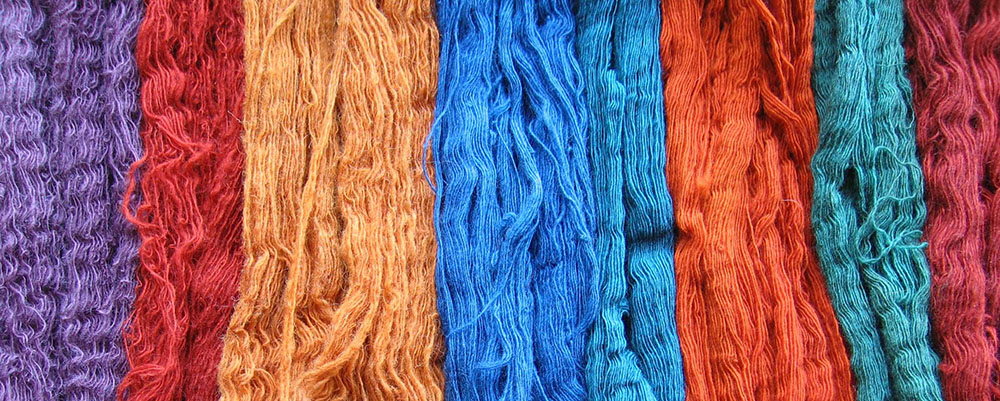

All you need to clean anything should be within a topic below:

Fabrics are made up of fibres and can be a compound of many different fibres, designed to give the fabric a particular feel and certain charectaristics.
For example, elastane (also known as spandex) gives a fabric stretch - so the current modern trend to make garments "Stretchy" means that most will have an amount of this fibre mixed into other fibres to increase the elasticity of the material. The problem with spandex is that with harsh treatment (wringing or scrubbing) the fibres can break, leaving white dots on the surface. So, as different fibres are added in differing proportions it affects how the garment wears over time and how it should be cared for.
In this section we give a comprehensive list of common fabrics and their charectaristics, care and what type of garment they are likely to be made into. In all we've listed 83 fabrics and as inovative manufacturers and chemists are inventing new fabrics and fibres all the time this is unlikely to be every single fabric you might come across. However, it should cover most of the fabrics used in the garments you buy.
Silk like fabric often used for linings. Colourfast and shrink resistant. This is a fibre, either triacetate or diacetate. Warm wash or dry clean only. - Fibre weakens in water. - so do not ring. - Spin only if care label allows - Iron while damp on cool setting. - Do not use acetate or acetone on fabric |
 |
Soft warm and durable, often used for knitwear. Won't shrink. This is a fibre as well as a fabric. Warm wash, cold rinse, short spin can be wrung Pull knitwear into shape and dry flat Cool iron only when garment is dry. |
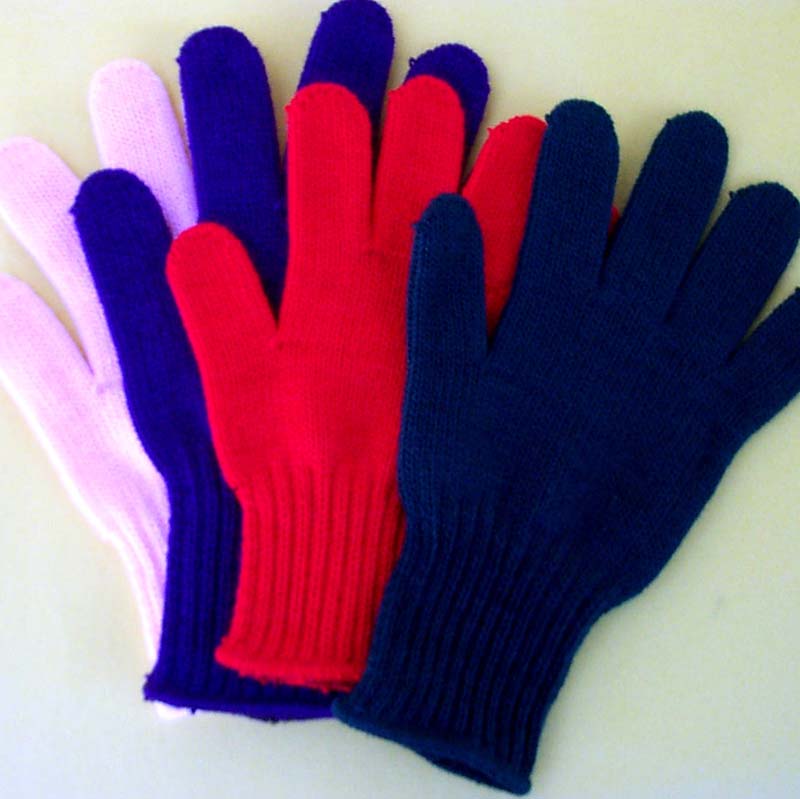 |
Very soft hair from a rabbit or goat made into hats scarves and jumpers. Will molt onto other clothing. This is a fibre but it can be mixed with other fibres such as nylon for effect or strength. Best to dry clean - If washing use only cool water and wool detergent - Hand wash and treat gently - Do not wring Roll in towel to dry - Shake and straighten and lie flat to dry. |
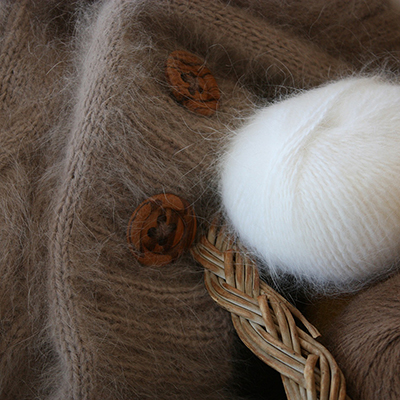 |
Lambs skin or simulated lambs skin. Wool fibre or acrylic. Dry clean or shampoo or wash as wool - Do not iron |
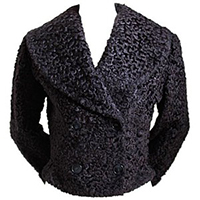 |
Looks like tissue but may be much finer. Used as interlining to stick fabrics together and stiffen fabrics. Can be any fibre but normally would be heat resistant. Must follow the instructions on the label - Some will be dry clean only - If used as an interlining likely to come unstuck at the temperature that was used to stick it in the first place. |
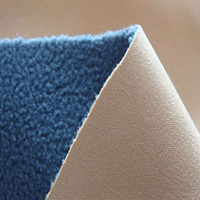 |
Very light loose weave fabric. Cotton or linen. Follow instructions for cotton or linen. |
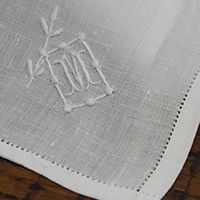 |
Decorative edging used on some garments. Can be any fibre but normally would be heat resistant. Dry clean only. |
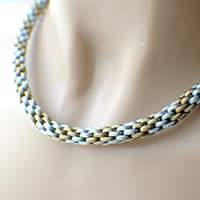 |
Very heavy fabric often velvet with metal thread and raised flower or leaf designs. Acetate, cotton, silk viscose or mixture Dry clean only - may damage if ironed |
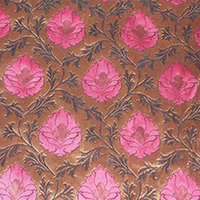 |
Lacy fabric with open embroidery. Cotton or polyester/cotton mix. Wash as for cotton - Ensure no hooks to catch embroidery - If it appears to shrink in washing stretch out the embroidery while ironing. - Good to iron while damp. |
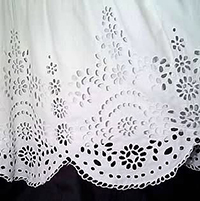 |
Stiff harsh fabric often used as stiffening in curtain tops and hats. Cotton or linen heavily stiffened. Dry clean only. |
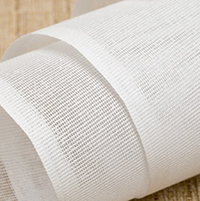 |
Generic term for medium weight cotton. Cotton. Wash as for cotton or dry clean if allowed. |
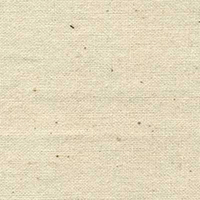 |
Lightweight loosely woven fabric most often used for handkerchiefs. Cotton or linen. Follow instructions for cotton with no restrictions. |
 |
Wool fabric taken from a Camel, coarse hairs from the top and fine hairs from the belly. This is a fibre Dry clean only - Iron with a damp cloth on top of fabric to stop shine. |
 |
Tufted fabric with pile. Mostly cotton but can be nylon, polyester, viscose, acetate. Clean as for the fibre type. - Shake out and fluff up the pile after drying. |
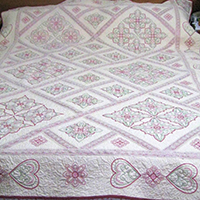 |
Very stiff fabric used for tents, handbags etc.. Cotton. Wash with warm water and soap, scrub with brush if necessary and rinse well. - Line dry - Shouldn't need ironing because of weight. |
 |
Fine wool from the cashmere goat. Is a wool fibre. Wash by hand as for wool - Best to dry clean - Prone to shrink in water - Do not wring or tumble - Dry flat - Steam if possibly or cool iron. |
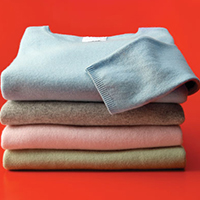 |
Firm fabric where the weave gives lines in a diagonal pattern. Often used as riding breeches and hard wearing trousers, raincoats, etc. Wool, Cotton or man-made fibres. Dry clean unless label says otherwise. - May be prone to shrink in water. - Iron under wet cloth if wool. |
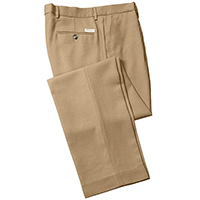 |
Very light loosely woven fabric. Cotton. Hand wash - Do not wring - Do not tumble - Prone to shrinkage - Stretch and iron while damp |
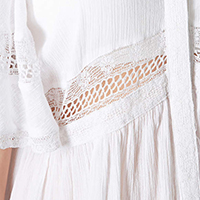 |
Soft velvety fabric often used in knitwear. Cotton, viscose, wool or silk. Clean according to fabric type - Best dry cleaned to keep pile soft - Shake while drying - Brush when dry - Ironing not recommended |
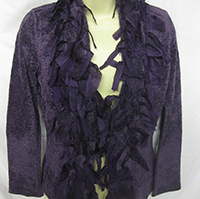 |
Very soft gauze-like fabric often used in party type dresses. Silk, viscose, acetate. Clean according to fabric type - Place in bag for protection - Dry cleaning recommended - Tumbling not recommended - Do not sprinkle water on dry chiffon as it will mark - Iron while damp cool iron |
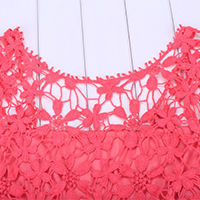 |
Fabric with pattern and shiny glaze often used in furnishing or colourful clothing. Cotton. Dry clean only - If washed the glaze is likely to be removed - If washed use cold water - Do not rub or twist - Do not tumble - Iron while damp try from reverse side |
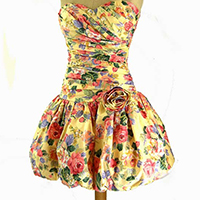 |
A ribbed fabric where the ribs are formed by cutting yarns to show the ends of the fibres, similar to velvet. Cotton, cotton/viscose or cotton/polyester. For best results wash by hand or dry clean - Do not wring or twist - No not iron on right side - Use cool iron on wrong side or under a damp cloth. |
 |
Shirts, dresses, furniture and almost all other types of garment or household furnishing can be made of cotton. This is a fibre. Wash or dry clean depending on the weave or knit. - Will distort and shrink both in wear and in the wash. - Take instruction from the garment label - Generally can be washed, tumbled and ironed |
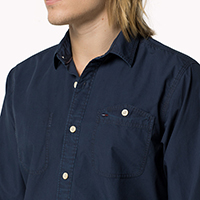 |
Cloth made from a highly twisted yarn giving a wrinkled or puckered appearance. Most often wool. Follow label instructions - If washable best to hand wash - Roll in towel to absorb moisture - Do not tumble - Iron on reverse or under damp cloth |
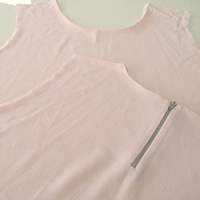 |
A finer high twist yarn as above. Silk, viscose, acetate or polyester. Clean according to fibre type - Iron while damp - If shrinkage is apparent then stretch into shape while ironing wet. |
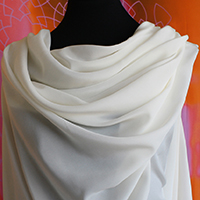 |
Shiny surfaced material made with satin and sateen type weave in patterns made especially for table cloths. Linen, silk or synthetic. Wash as according to fibre - May be boiled if hardy table cloth - Will look best if starched - Iron at hottest possible setting for fibre |
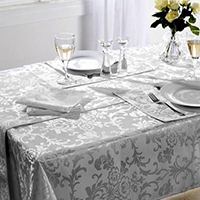 |
Jeans material, indigo died. Cotton. Wash on its own - Will run colour - Likely to stretch in wear and shrink in wash - Iron while damp - Ironing over linings is likely to cause shine. |
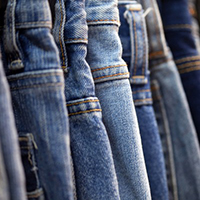 |
Brand name for acrylic fibre. See Acrylic. See Acrylic. |
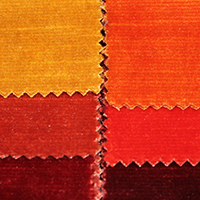 |
Fine soft fabric with ribs in the weft direction (across the fabric). Used to be silk, now may be man made fibres or synthetics. Treat for the fibre - Likely to be dry cleanable - Care needed ironing anything with ribs in case of shining or flattening. |
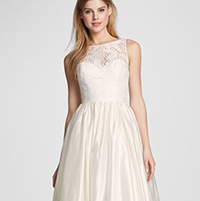 |
Matted appearance very soft, often used for card tables and baize on snooker tables. Must have some form of hair fibre in it, commonly wool, but may have mixed fibres. Do not wash - Will shrink dramatically - Make a paste with white spirit and French chalk and rub well into cloth. dry and then brush off. |
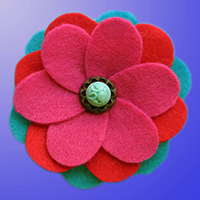 |
Loose weave woolly finish, appears to be felted surface. Cotton Treat as cotton - Iron under a damp cloth. |
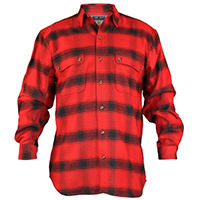 |
Soft cotton appearance often used in night gowns. Cotton in the warp direction and soft cotton in the weft. Wash as for cotton |
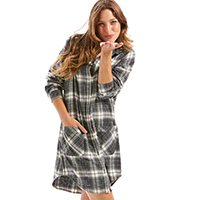 |
Fabric where fibres have been stuck on to a base giving a velvet pile. No specific fibres are used. Hand wash or follow the instructions - Do not spin or wring - Iron on reverse side. |
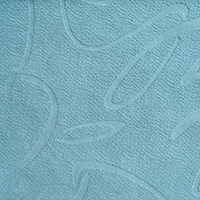 |
Lightweight twill fabric often printed. Originally silk but may be acetate. Wash according to fibre - No special instruction needed. |
 |
Fur simulation fabric in varying designs and colours replicating animal fur. Nylon, polyester, acetate, viscose or acrylic. Dry clean or follow the label instructions - Lightly sponge surface with warm water and - detergent - Do not iron. |
 |
Used for raincoats and sportswear, a strongly woven fabric with diagonal twill ribs. Wool worsted, cotton or some man made fibres. Dry clean only. |
 |
Sheer fabric with crepe like yarn of high twist but finer material. Wool, cotton, silk or man made fibres. Dry clean silk or wool - Wash man made to the weakest fibres on the care label - Iron for the fibre type. |
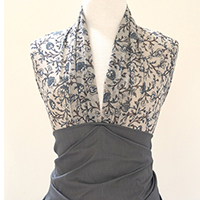 |
Finely checked or striped fabric. Cotton, Poly/Cotton Mix. As for cotton. |
 |
Fine fabric with ribs running across. Silk, viscose, acetate. Dry cleaning is best. |
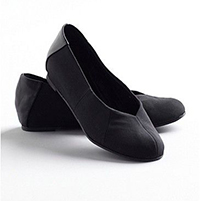 |
Finely knitted fabric normally used for knitwear or T Shirts. Wool, silk, cotton, viscose, acetate or nylon. Dry clean wool, silk and viscose and acetate - Wash cottons as per instructions on care label - Low tumble - Do not wring - Will distort due to stretch during wear and washing - Iron with normal cotton iron setting - Take care if printed T Shirt Iron on reverse in that case. |
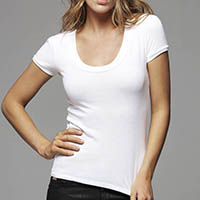 |
Fine cotton like material waterproof light and fluffy. This is a fibre from the Kapok tree. Dry clean only. |
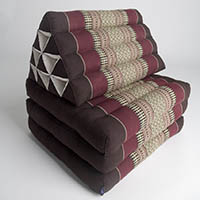 |
Delicate open mesh or net that can be made into a pattern by knitting. Cotton, polyester, nylon, or mixture. Clean in a bag (Pillow case will do) - Use mild detergent - Cotton may be boiled- - Tumble on it's own - Pull into shape while ironing - Hot iron cotton. |
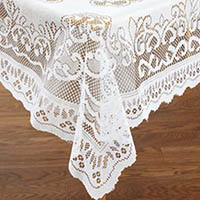 |
General name for fabrics containing metallic threads, originally gold and silver lame. Must be a mixture together with metallic fibre. Normally dry clean - Do not treat with acid when stain treating |
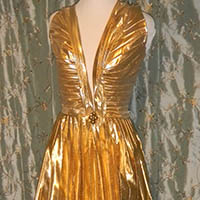 |
Very fine normal woven material. Cotton, linen, Poly/cotton or viscose mixtures. Hand wash - Rinse thoroughly - Wring or spin - Iron as for cotton. |
 |
Similar to cotton but normally of finer quality as the fibres are longer. Flax (linen) May hot wash - Better to dry clean fine garments - Iron on reverse side - Prone to shine if seams are ironed - Also prone to crease very badly - Ironing while damp may help. |
 |
Shiny yarns that look like they have metal running through. Plastic coated aluminium mixed with other fibres. Dry clean only. |
 |
Similar to acrylic material but less strong. This is a fibre. Wash in warm water and detergent - Dry cleaning allowed - Drip dry - Only use cool iron - Very susceptible to heat. |
 |
Fine wool from the angora goat gives a shiny appearance. This is a fibre. Dry clean recommended. |
 |
Ribbed and corded fabric with a ripple effect (like water marking). Silk, acetate, polyester. Dry clean only. |
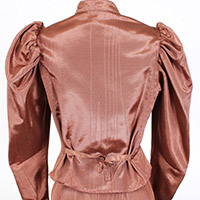 |
Very loosely woven fabric normally used to mop baby milk. Cotton. Warm wash - Iron while damp. |
 |
Very fine fabric used for curtains and underskirts. Cotton, nylon, polyester. Cotton nets should be washed in hot water. - Cool wash for man mades and synthetics - Do not wring - Use curtain whitener if they have gone gray - Iron cool - Dress nets should be cool washed by hand or dry cleaned. |
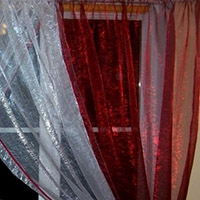 |
Smooth fibre with good stretch properties and that doesn't take in much water. This is the fibre known as polyamide. Warm Hand wash or dry clean - Cold rinse - Drip dry - Sensitive to heat - Shouldn't require ironing |
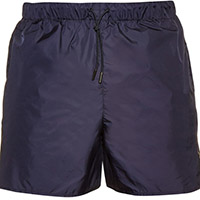 |
Dress fabric both fine and stiff like chiffon. Silk, nylon, viscose. Dry clean or wash with great care as fabric is delicate - Drip dry if washed |
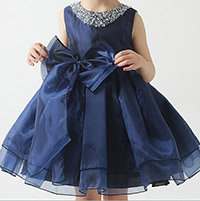 |
Plain weave fabric with sunken lines around cords. Cotton. Treat as for cotton - Iron on reverse side. |
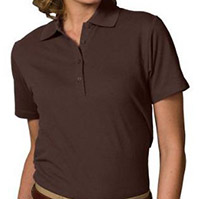 |
Strong smooth fabric that now can be used in many forms, often the material of football shirts and is the microfibre in fleece garments. This is a fibre. Wash warm - Cold rinse normal spin - May be tumbled but choose low heat - Iron cool as the fabric is thermoplastic (it melts at fairly low heat). |
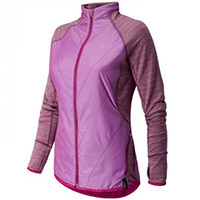 |
Cotton type fabric with ribs across. Cotton, viscose, silk or wool Clean as per the fibre and care instructions. |
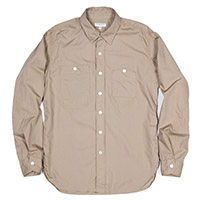 |
Often rubber looking material. Chlorofibre, polyvynilchloride Great care - Hand wash - Drip dry - Do not iron |
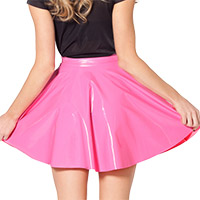 |
This is the US term for viscose See viscose. Dry cleaning recommended as it weakens in water - May be washed as per instructions - If material has lustrous or deep look to it care must be taken when ironing it will readily shine. |
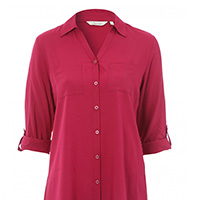 |
Very smooth but normally dull appearance to this fabric. Will be seen on all satin fabrics as the reverse side from the shiny side. Silk, cotton, polyester, nylon or acetate. Treat with care and follow the care label for fibre type - Iron on dull side - Easy to damage with sharp objects - Water will mark the fabric. |
 |
Shiny side of the sateen fabric normally used in fine fancy dress wear. Silk, cotton, polyester, nylon or acetate. Treat with care and follow the care label for fibre type - Iron on dull side - Easy to damage with sharp objects - Water will mark the fabric. |
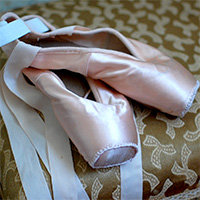 |
Fine material with puckered stripes or checks. Cotton, silk, nylon, polyester. Follow instructions for fibre - Should need no ironing |
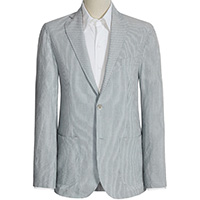 |
Strong twilled material used for suits. Mostly Wool and wool mixtures. Dry clean only - Iron using damp cloth - Iron jackets from the inside taking care of linings. |
 |
Coarse silk fabric with slubs. Mostly tussah silk but can be polyester or nylon. Wash as for fibre - Dry clean recommended for silk items - Iron damp with warm iron. |
 |
Soft fabric with lustrous look that does not contain heat and is therefore good for hot climates. This is a natural fibre. Dry clean. - If washed treat with care silk can be damaged by rubbing - Do not wring - Hang to dry - Iron while damp - Clean often as ingrained stains may not come away. |
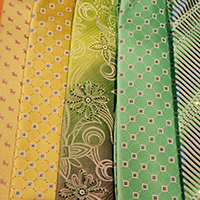 |
Crisp smooth fabric with a slight rib running across. Silk, polyester, acetate or nylon. Dry cleaning recommended. |
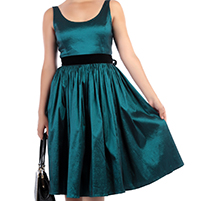 |
This is a generic name for polyester. Polyester. Wash warm - Cold rinse normal spin - May be tumbled but choose low heat - Iron cool as the fabric is thermoplastic (it melts at fairly low heat). |
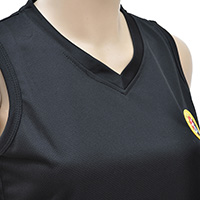 |
Used for pillows and duvets and mattress covers. Cotton. Wash as for cotton. |
 |
As the name implies used for towels and dressing gowns extensively. Cotton or polyester/cotton mix. Machine or hand wash dependent on label - Tumble but not too dry - Should not need ironing but can be ironed on medium setting. |
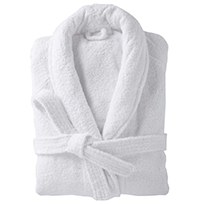 |
Silky smooth fabric often used as lining and party type dressing. Man made fibre. Dry clean recommended - Hand wash if necessary - Cold rinse short spin - Cool iron only - Do not use acetone or acetic acid |
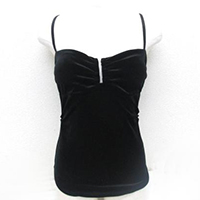 |
Knitted stretch fabric. Viscose, nylon, polyester. Appropriate cleaning for fibre type as on label. |
 |
Very fine soft netted fabric in a hexagonal shape. Silk, cotton, viscose or nylon. Was as per fibre or dry clean for safety - Place netting in bag again for safety - Limp cotton tulle can be starched - Iron as for fibre being careful not to catch and tear fabric. |
 |
Coarse heavy weight fabric used for outer garments. Wool, wool/nylon or wool/polyester mixes. Dry cleaning recommended - May wash dependent on fibre type - Iron using damp cloth or on reverse side. |
 |
Heavy fabric with a pile. Acrylic, may be other fibres. Dry clean only |
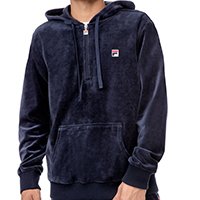 |
Lustrous material with rich pile normally in vivid colours, used extensively for party wear and curtaining Originally silk but can be cotton, nylon, viscose or polyester. Dry cleaning recommended - If washed drip dry - Do not wring or spin - Steam instead of iron - If ironing necessary do so from the reverse side on towel. - Do not rub the surface it is easy to crush the pile |
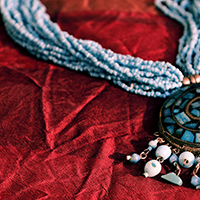 |
Often made into blankets with a coarse look and feel. Hair from a vicuna lama. Treat exactly as wool. |
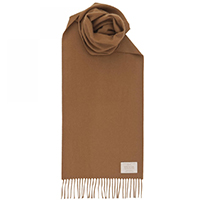 |
May be similar to cotton but can be made very lustrous and is often used for ladies suits, dresses etc.. Man made fibre regenerated from cellulose. Dry cleaning recommended as it weakens in water - May be washed as per instructions - If material has lustrous or deep look to it care must be taken when ironing it will readily shine. |
 |
Generic name for this mixture of fibres. Mix of wool and cotton. Hand wash warm with mild detergent - Dry clean recommended - Drip dry - Iron on reverse side. |
 |
Light weight see through fabric often used for shirts, blouses and net curtains. Cotton, viscose, nylon or polyester. Wash according to fibre type - Do not wring or twist - Hang to dry - Iron while damp |
 |
Soft fabric with pile one side often used for children's and women's night wear. Cotton, wool/cotton blend or viscose. Warm wash - Cool tumble or hang dry - Medium iron if needed. |
 |
Soft fabric with many uses and looks from fine knitwear to coarse coats. Hair from sheep, goats or camels Dry clean recommended - Hand wash or machine wash on wool setting - Will readily shrink if not specially treated wool - Do not wring - Dry flat - Cool iron |
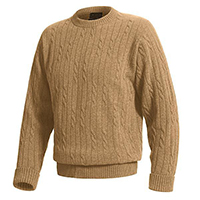 |